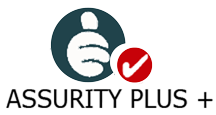- Your cart is empty
- Continue Shopping
‘Don’t trust rapid tests’: Expert advises Canadians to test more than once before making plans

For the first time in two years, Canadians celebrating Easter and Passover are faced with few public health restrictions limiting their ability to gather with family and friends.
But experts are urging Canadians to take caution and do what they can to limit the spread of COVID-19.
According to Dr. Peter Juni, the outgoing scientific director of Ontario’s COVID-19 Science Advisory Table, this means using more than one rapid antigen test (RAT).
“Don’t trust rapid tests,” he told CTV News Channel on Sunday. “We don’t know yet how this works with [Omicron] BA.2. If it’s negative once, [that’s] not enough.”
According to a science brief released by the Ontario Science Table in February, RATs are believed to be less sensitive to the Omicron variant, particularly when compared to their ability to detect the Delta variant. Additionally, little remains known about how these tests perform when exposed to the BA.2 sub-variant, Juni said. As a result, he recommends Canadians take two rapid tests to confirm whether or not they are infected with COVID-19 before meeting with family and friends.
“Just one test – forget it, that’s not enough,” Juni said. “[Take] at least two rapid tests at least 24 hours apart with no symptoms.”
Anyone showing symptoms of COVID-19 is advised to not gather with others and should instead self-isolate, he said. Common symptoms include a sore throat, runny nose, a new or worsening cough, and fatigue.
Infectious disease specialist Dr. Isaac Bogoch explained that COVID-19 rapid tests are designed to determine not only whether someone has the virus, but if they are contagious at that moment. Taking more rapid tests raises the chances that any virus that exists will be detected, he said.
“If you do two tests 24 hours apart, you just increase the probability that you will detect the virus if it is indeed there,” Bogoch told CTV’s Your Morning on Monday. “You’ll presumably have more virus in the back of your nose when you’re testing, and that test will be positive.”
While rapid test instructions only require users to swab their nose, Bogoch pointed to emerging data suggesting that when people swab the back of their throat and side of their cheek, in addition to their nose, this increases the chances of detecting any virus that may be present.
According to Bogoch, it’s important to remember that rapid tests are not perfect, as there have been instances where despite testing negative with an RAT, people soon discovered they actually had COVID-19.
“We’ve got to be honest about rapid tests, right? They were never perfect and they never should have been deemed as perfect,” Bogoch said. “They’re a helpful tool amongst several other tools to create a safer indoor environment.”
In addition to rapid testing, Juni said those who are able to gather outdoors should do so in an effort to seek out better air circulation. Those who are gathering indoors are advised to limit the number of people in attendance, avoid crowds, and ensure there is proper ventilation.
“You can improve the ventilation by simple things like opening windows and doors,” Bogoch said. “Rapid tests are to be used with good indoor ventilation, vaccination, [and] masking.”
WHAT WE KNOW ABOUT OMICRON BA.2
The Omicron BA.2 sub-variant recently emerged in Canada and other countries around the world. While evidence has suggested that the Omicron BA.2 sub-variant is more transmissible than its predecessor, Omicron BA.1, it doesn’t seem to cause more severe disease.
Initially, Omicron BA.2 appeared to be spreading relatively slowly in Canada. However, provinces such as Manitoba and Ontario have already announced that the Omicron BA.2 sub-variant is the most dominant strain circulating among communities.
This comes as COVID-19 case numbers are climbing yet again across Canada, based on data compiled by CTVNews.ca. Those who have recently been infected with the virus or received their recommended vaccine doses are expected to have good protection against transmitting COVID-19 to others, Juni said. Those who have not been infected or have not had their vaccines should take extra precaution, he said.
“Quite a few people have protection through vaccination and a recent [exposure] already with BA.2, this new sub-variant,” Juni said. “For all of us who haven’t been infected relatively recently, we just need to be really careful that we don’t transmit and that we don’t get sick ourselves.”
In Ontario, about five per cent of the population is currently infected with COVID-19, according to data gathered by the science table.
“When you go somewhere and socialize, it’s relatively certain if the group is a bit larger, that there’s at least one person in there who is infectious right now.”
As a result, these recommendations go beyond the holiday weekend, Juni said. He advises the continued use of good-quality masks such as a KF94, KN95 or N95s. If none of these is accessible, Juni suggests layering a medical mask underneath a cloth mask for a snug fit.
“All of that will help and we just need to do that a few more weeks,” Juni said. “When I now see that we’ve reached the crest, if we are all a bit careful, this will already help.”
With files from The Canadian Press, and CTV’s Katherine DeClerq and Brooklyn Neustaeter.
WHAT QUESTIONS DO YOU HAVE ABOUT OMICRON?
With the emergence of a new COVID-19 variant of concern, labelled Omicron, CTVNews.ca wants to hear from Canadians with any questions.
Tell us what you’d like to know when it comes to the Omicron COVID-19 variant.
To submit your question, email us at dotcom@bellmedia.ca with your name, location and question. Your comments may be used in a CTVNews.ca story.








